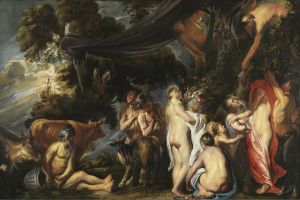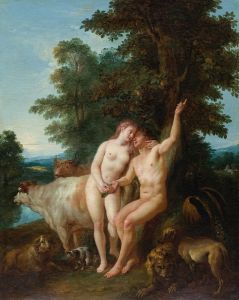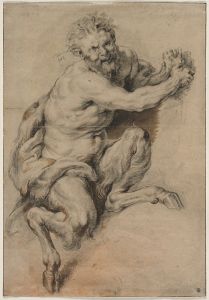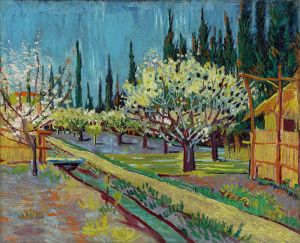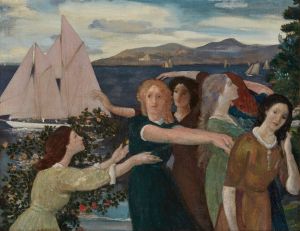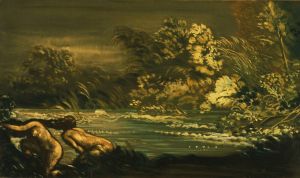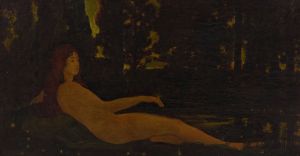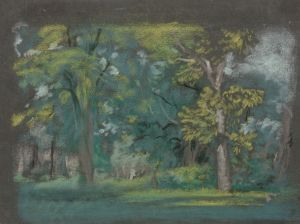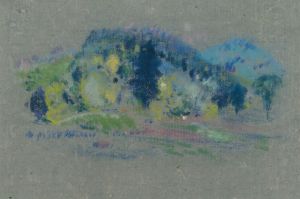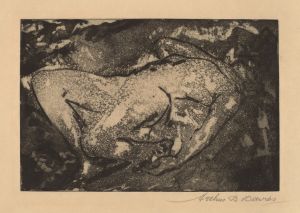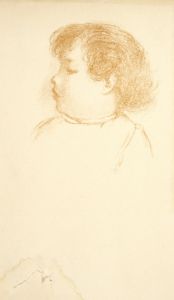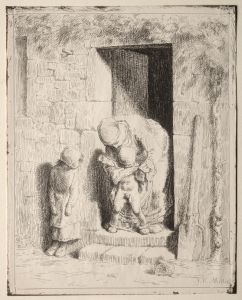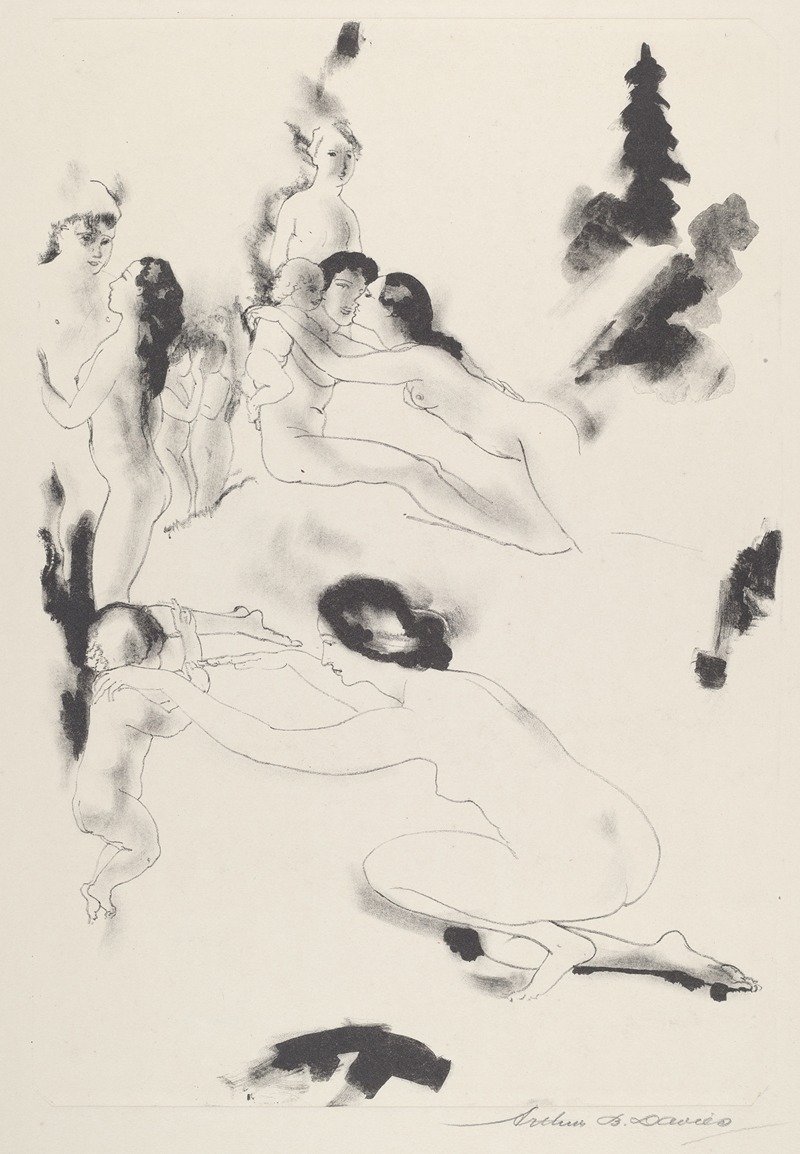
Orchard of Bounties
A hand-painted replica of Arthur Bowen Davies’s masterpiece Orchard of Bounties, meticulously crafted by professional artists to capture the true essence of the original. Each piece is created with museum-quality canvas and rare mineral pigments, carefully painted by experienced artists with delicate brushstrokes and rich, layered colors to perfectly recreate the texture of the original artwork. Unlike machine-printed reproductions, this hand-painted version brings the painting to life, infused with the artist’s emotions and skill in every stroke. Whether for personal collection or home decoration, it instantly elevates the artistic atmosphere of any space.
Arthur Bowen Davies was an American artist known for his contributions to the American modernist movement in the early 20th century. Born on September 26, 1862, in Utica, New York, Davies played a significant role in the development of American art, particularly through his involvement with the Ashcan School and as a key organizer of the 1913 Armory Show, which introduced modern European art to American audiences.
"Orchard of Bounties" is one of Davies' works that exemplifies his unique style, which often combined elements of symbolism, romanticism, and modernism. While specific details about "Orchard of Bounties" are limited, Davies' body of work typically features dreamlike landscapes and ethereal figures, reflecting his interest in creating a sense of harmony and beauty. His paintings often depict idyllic scenes that evoke a sense of tranquility and otherworldliness, characteristics that may also be present in "Orchard of Bounties."
Davies was known for his ability to blend traditional and modern techniques, often using soft, muted colors and fluid forms to create a sense of movement and emotion. His work was influenced by a variety of sources, including classical art, the Symbolist movement, and contemporary European artists such as Paul Cézanne and Odilon Redon. This eclectic mix of influences allowed Davies to develop a distinctive style that set him apart from his contemporaries.
Throughout his career, Davies maintained a fascination with the human form and often incorporated figures into his landscapes. These figures, typically depicted in graceful, flowing poses, contribute to the dreamlike quality of his work. In "Orchard of Bounties," it is likely that Davies continued this exploration of the human form, integrating it into a lush, abundant landscape that reflects the painting's title.
Davies' role in the 1913 Armory Show was pivotal in shaping the course of American art. As president of the Association of American Painters and Sculptors, he helped organize the exhibition, which introduced the American public to avant-garde European artists such as Marcel Duchamp, Henri Matisse, and Pablo Picasso. The Armory Show was a turning point in American art, challenging traditional artistic norms and paving the way for modernism in the United States.
Despite his involvement with the avant-garde, Davies maintained a personal style that was more lyrical and less radical than some of his contemporaries. His work often focused on themes of beauty, nature, and the human spirit, reflecting his belief in the transformative power of art.
Arthur Bowen Davies passed away on October 24, 1928, in Florence, Italy. His legacy as an artist and advocate for modern art continues to be recognized today. While specific information about "Orchard of Bounties" is limited, the painting is likely representative of Davies' broader artistic vision, characterized by its harmonious composition and exploration of the interplay between the natural world and the human experience.





